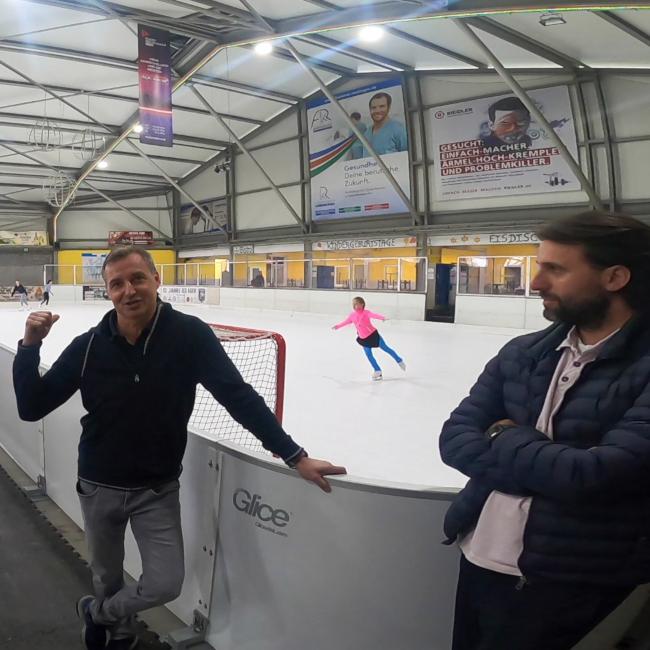Ice sport all year round
“I’m happy to invite my rink operator colleagues from all over to drop by and try it out,” says Tilo Fritz, leaving no doubt about the enthusiasm for his synthetic Glice rink. The waterless zero-power surface from Switzerland opens up completely new opportunities for ice rink operators.
For 20 years, the former ice hockey player and sports director of TSG Reutlingen has been running his ice rink, but synthetic ice could never impress him – until he came across Swiss eco-ice by Glice. Alongside friend and hockey pro Silo Martinovic, Fritz tried out the HC Davos’ rink, which is part of a Glice Hockey Elite Center that has revolutionized training methods for the national league champion. Fitz and Martinovic were sold right away.

photo: Glice